 | |||
 |  |  |
 |  |
 |  | ||
 |  | ||
 |  | ||

| Written by Howard Lamey (with a little help from Paul Race) for Big Indoor TrainsTM |


|
Note from Editor: This is a followup to our 2007 article on Building a Glitterhouse. We really do recommend that you start with that project, as this one is a little more complicated. These projects come to us courtesy of Florida designer Howard Lamey. Howard loves collecting and designing replicas of those little cardboard houses that became popular Christmas decorations between World Wars. Collectors call the "putz" houses, from a German-American word related to "putter." Howard calls his creations "glitterhouses," because that's the specific kind of putz houses he likes the best. Also, Howard often names his special project as he begins planning them, it helps him focus on what aspect he wants to emphasize. This one, the "Little Charmer," lives up to its name. Building the Little CharmerThe Little Charmer is very similar to our starter project, except that we've added a wing and more internal bracing to strengthen the structure. If you've already built the starter project, or any of our other projects, you can probably skim parts of this article.What You Will NeedStart by saving cereal boxes, the backs of writing tablets, anything flat, firm and clean. Please keep some corrogated cardboard on hand, too - it makes the best bases. In addition, for this project you'll need:
Note: Our article on What You Need to Build Glitterhouses lists many other materials and tools that will help you work more quickly and effectively. Printing the Plans
If you want to see the plans before you print them, you can see a bigger version by clicking on the graphics above. But the best way to print them is to click the following links to download the PDF versions: Select the print option, tell it to "auto rotate and center" or whatever else you need to make it go to Landscape mode. Don't select the "scale to page" or "shrink to fit" option. Print. If you don't have Adobe Acrobat Reader on your computer or for some reason that doesn't work, you can open the big JPG versions by clicking on the reduced plans above. Choose the "file, page setup" from your browser. When the page setup menu comes up, select "landscape mode." Choose the "scale to fit" option (sometimes "print as large as possible" or something like that. You may have to tweak the sizes a little to get them just right, though - that's why the PDF versions are more likely to work for you. If neither of those work, contact Paul and ask him for help - that's his department. :-) Building the BaseThe base is a rectangular "box" that is decorated before the house and trees are installed. For this project, it should be about 4 1/4" square, and about 1/2" high.
Cut the Base - For this project, I cut the base and fence pieces out at the same time. The base is made from heavy corrugated cardbard, the kind they use in big boxes. The fence pieces are made from fine corrugated stock, like that from the small express mail boxes you get at the post office. The same kind of fence can also be cut from heavy card stock such as posterboard or the back of a writing tablet. If you wish, you may use different materials for the fence, such as a miniature wooden snow fence from the craft store or a rustic rail fence you make from twigs. Glue The Base - Build the base up from layers of corrugated cardboard glued together in a sandwich. You then wrap and glue a strip of thin poster-board or cereal-box cardboard all around it to smooth over the rough edges of the corrugated cardboard.
Wrap the Base - When the base is built and the glue is dry, you cover it with white bond paper just like you would wrap a gift, except that all surfaces of the paper cover must be completely glued down to the box. A glue stick works great for this.
Note: More details about building bases are provided in our article: Building Glitterhouse Bases
Prime the Base - When all the glue has dried, paint the base with the flat white paint. This provides an even finish that will hold the acrylic paint and glitter. If the fence is made of cardboard, prime it, too. Selecting the Stock for the Structure PiecesThe house, roof, chimney, and chimney cap need to be cut from thicker cardboard, such as the cardboard from the back of a writing tablet. The door and window frames can be cut from thinner stock, such as posterboard or cereal box cardboard. The ridge brace and liner pieces can be cut from heavy corrugated cardboard stock.
Cutting Out the Structure Pieces
Assembling and Painting the HouseNote: You'll notice that there is some "hurry up and wait" involved with this portion of the project. That's one reason I often work on more than one building at a time.
Adding Additional Scenery
I like to use miniature Christmas tree ornaments such as a Santa, deer and snowmen. You may even choose to make you own accessories. [Editor's note: I have seen cheap party favors and cake decorations that were also suitable - it's okay if your accessories look a little "tacky." For trees, some folks cut apart a loofah sponge and dip it into deep blue-green paint, wring it out, and let it dry to simulate the lichen-like organic material used on some of the original houses. - Paul] When everything is glued together and the glue has dried, touch up any place that the glitter hasn't covered evenly. ConclusionYou can see that, when you get to the gluing, painting, and glittering stages, there's a lot of "hurry up and wait." That's one reason many people who build modern putz house recreations work on two or three houses at the same time - you can work on the second house while the glue is setting on the first one, and so on.Reader InputA very nice reader who didn't want her name used sent us the photo on the left below. Her "Little Charmer" project (click for a bigger photo) replaced the fence with extra shrubbery for an "overgrown garden" look. Thanks, bunches, for sending it in.The photo to the right below is from "Life is a Party" blogger Dannyelle Nicholle. Dannyelle has made at least 22 glitterhouses, using Howard's plans and instructions, but her favorite is her "Little Charmer." Click on the photo to see the other photos on Dannyelle's blog.
Commercial "Plug" - Now that I'm in "retirement," this hobby has become a sort of avocation for me. Several folks have commissioned me to build specific houses for them. The drawing at the right shows the concept I started with when a friend asked me to design a house with this pattern. Then the original "artist's conception" was tempered by adjustments to make the house fit in better with the other houses it would be joining, as well as color and accessory changes. But you can see that it all starts, quite literally, at the drawing board.
If you'd like me to help you design and/or build a special vintage pasteboard house for you, or if you have any questions at all, please see my site, LittleGlitterHouses.com for more information. Looking for Your Ideas, Projects, or Photos - Also, if you have similar project, ideas, or photos that you'd like to share with your fellow readers and hobbyists, we'd love to add them to our sites, and we'll be sure to give you full credit for your contribution.
Other Resources for Putz Houses and Related Information
|

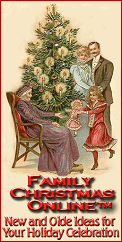


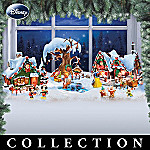


|

|

|  |
 |
 |  |  |
decorations that have been popular with our readers.
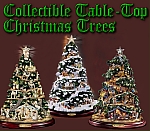
| 
| 
| 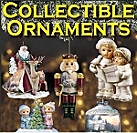
| 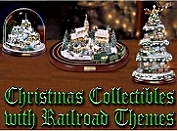
|
Note: Big Indoor TrainsTM, Big Train StoreTM, Family Garden TrainsTM, Big Christmas TrainsTM, Garden Train StoreTM, and Trains and TownsTM are trademarks of Breakthrough Communications (www.btcomm.com). Spook HillTM and LittleGlitterhouses.comTM are trademarks of Howard Lamey. All information, data, text, and illustrations on this web site are Copyright (c) 1999, 2000, 2001, 2002, 2003, 2004, 2005, 2006, 2007, 2008 by Paul D. Race. Reuse or republication without prior written permission is specifically
forbidden.
Big Indoor Trains(tm) is a participant in the Amazon Services LLC Associates Program, an affiliate advertising program designed to provide a means for sites to earn advertising fees by advertising and linking to amazon.com.
For more information, contact us.





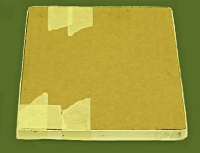
















 Building a Picture Window House
Building a Picture Window House
 Building a Bay Window House
Building a Bay Window House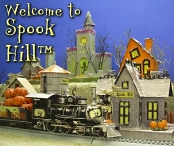 Welcome to Spook HillTM
Welcome to Spook HillTM